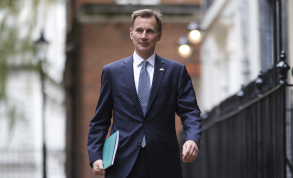Hunt launches major public sector productivity drive
Promising a ‘relentless focus on efficiency and innovation across both the public and private sectors’, the programme will start with public services. The 0.5% growth rate is the figure estimated as needed to stabilise the proportion of gross domestic product consumed by the state. Without any action, he said that public sector debt could more than double to 217% of GDP by 2071.
‘We start, I am afraid to say from a low base. Public sector output is 5.7% lower than pre-pandemic compared to private sector output which is 1.3% higher,’ Mr Hunt (pictured) told a Centre for Policy Studies conference on Monday. ‘What does that tell you? Our innovators, job creators, entrepreneurs and risk takers have bounced back, but the public sector is still feeling the effects of a once-in-a-lifetime pandemic.’
He added that ‘with the pandemic behind us’, it was time for a renewed focus on public sector reform.
The programme will be led by John Glen, chief secretary to the Treasury, and it will assess how productivity growth can be increased in the short and long term and assess what it would take to stop the state growing ‘ever bigger as a proportion of GDP’. However the productivity drive comes at a time when public sector staff feel they are working harder than ever. In the NHS, years of pay restraint have led to strike action forcing a higher pay settlement than the government had wanted to pay. And a number of staff groups remain in dispute over pay offers and are taking, or planning, strike action.
As part of the reforms, Mr Hunt said that measurement of productivity needed to improve and increase further the use of output measures as well as input data. Outputs and quality of delivery are already measured to an extent in the NHS. But the chancellor said that while the number of hospital treatments were counted, the value of preventative care was not, even though that saves lives and reduces costs.
He insisted the rewards of improved productivity were clear, again using the NHS as an example. ‘More innovation in the NHS, building on the success, for example, of the new surgical hubs that reduce waiting times and will give us one million extra procedures by 2024/25,’ he said. But changes are needed across the public services.
And while the government has more direct control over the public sector, it also wants to enable reform in the private sector, which will in part include encouraging more business investment.
Related content
The Institute’s annual costing conference provides the NHS with the latest developments and guidance in NHS costing.
The value masterclass shares examples of organisations and systems that have pursued a value-driven approach and the results they have achieved.